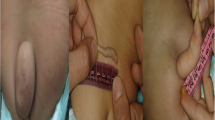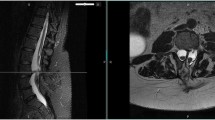Summary
¶ Background. The tethered cord syndrome (TCS) consists of an abnormally low conus medullaris tethered by a thickened filum terminale or various forms of spinal dysraphism. The adult variant of the syndrome seems not to be as rare as once thought.
Method. This study includes 11 patients with a TCS. Clinical, radiological findings and outcome were reviewed in these adult patients with TCS.
Findings. The patients ranged in age from 18 to 34 years (mean 24.09 years). There were 7 men and 4 women. The presenting symptoms in order of frequency were as follows: low back pain radiating to legs, urinary complaints, weakness in legs and impotence. All patients had magnetic resonance imaging scans. Physical exercise in 8, birth delivery in 1 and carrying heavy objects in 1 patient were determined as the precipitating factors. No precipitating factor could be defined in one of the patients. All patients were operated on, except for one. None of the patients worsened after surgery.
Interpretation. The patients presenting with low back pain and sciatica responded to surgery better than those with sphincter problems.
Similar content being viewed by others
Explore related subjects
Discover the latest articles and news from researchers in related subjects, suggested using machine learning.Author information
Authors and Affiliations
Rights and permissions
About this article
Cite this article
Akay, K., Erşahin, Y. & Çakır, Y. Tethered Cord Syndrome in Adults. Acta Neurochir (Wien) 142, 1111–1115 (2000). https://doi.org/10.1007/s007010070038
Issue Date:
DOI: https://doi.org/10.1007/s007010070038




